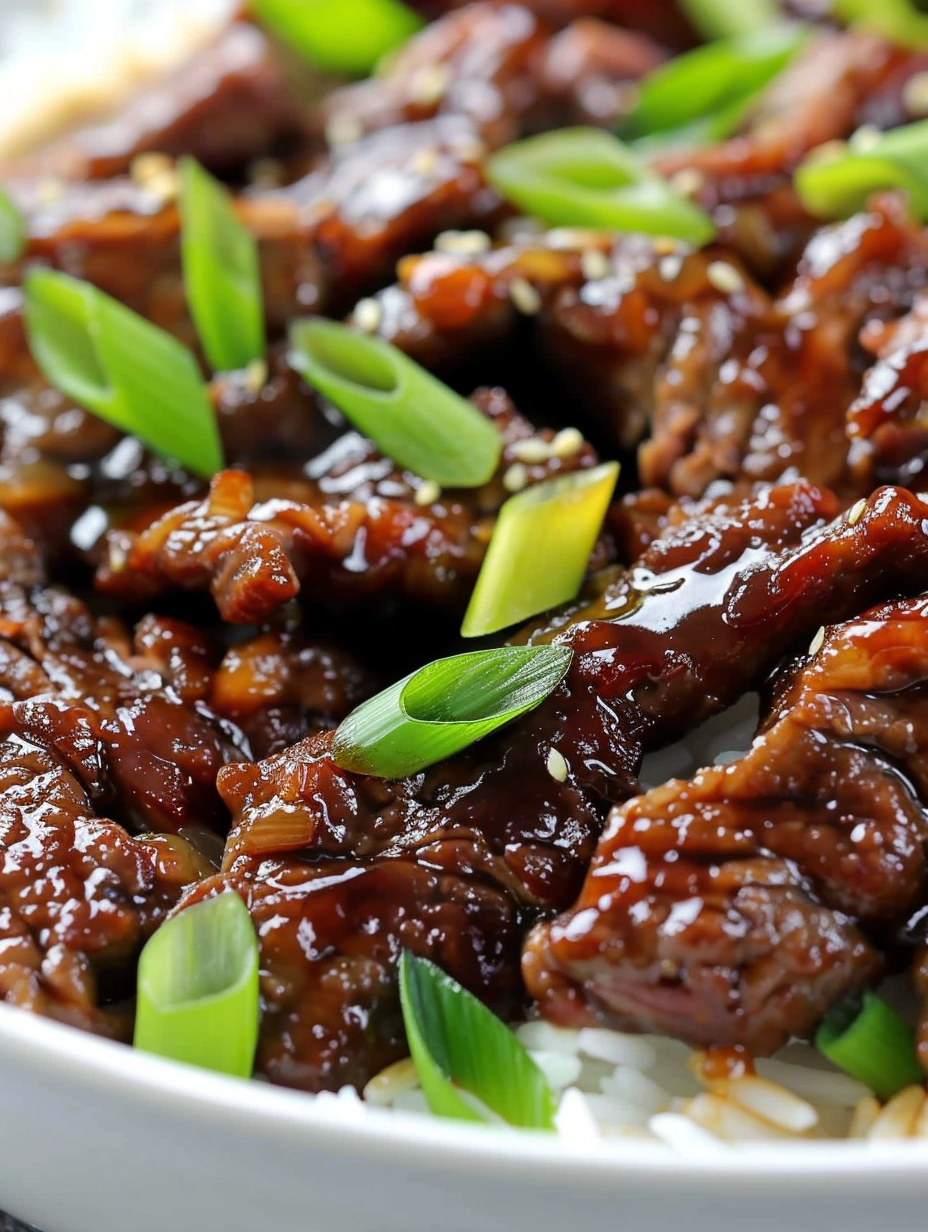Chicken Stir Fry with Noodles

Juicy chicken, crisp-tender vegetables, and tender noodles tossed in a deeply flavorful stir fry sauce — ready in 30 minutes for busy weeknights.
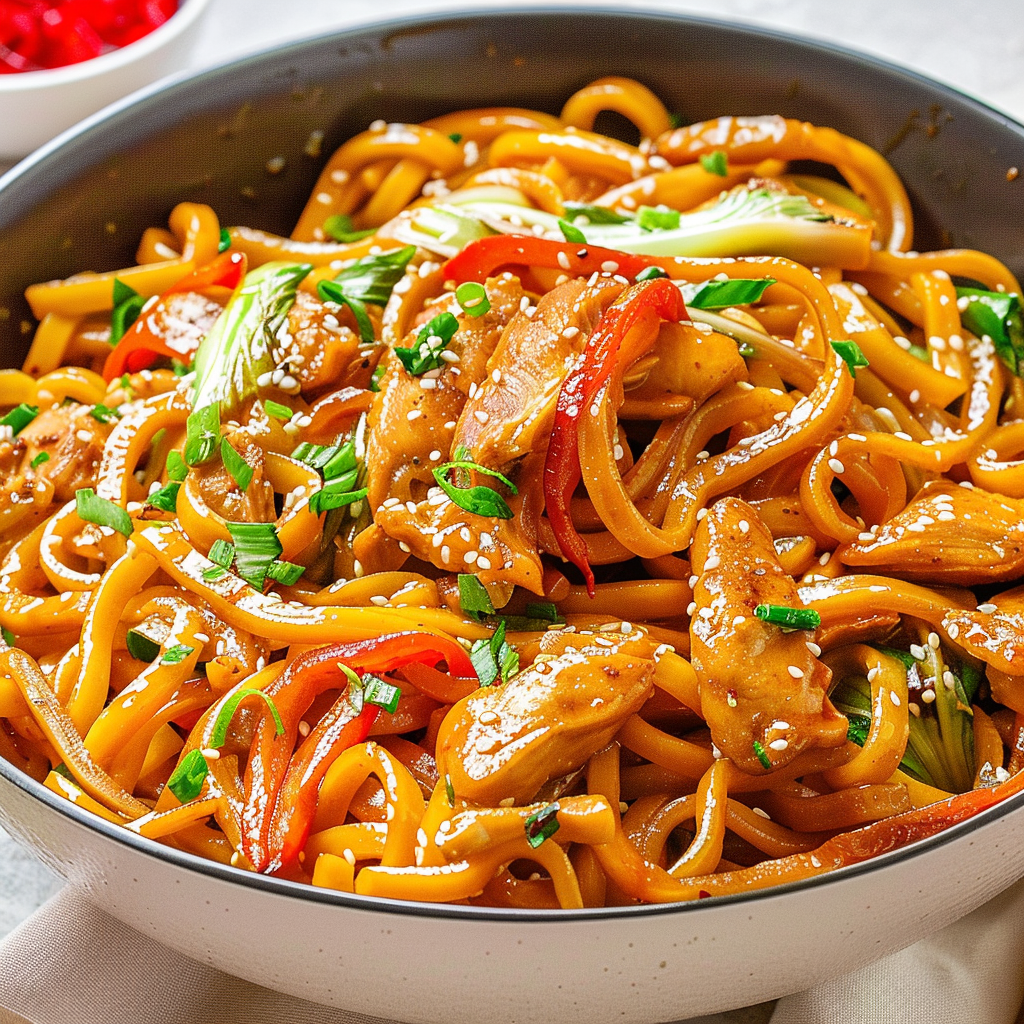
Why You'll Love This Recipe
- This comes together in about 30 minutes, making it perfect for busy weeknights when you want something fast and satisfying without compromise.
- It uses pantry-friendly staples like soy sauce, cornstarch, and udon or ramen, so you can usually make it without a special grocery run.
- The method is flexible: swap udon for yakisoba, ramen, or even spaghetti, and substitute chicken thighs with breasts for a leaner option.
- Vegetables stay crisp-tender when you follow the quick-high-heat technique, preserving color, nutrients, and texture.
- It’s healthier and fresher than most takeout: you control the oil, reduce sodium by choosing low-sodium soy sauce, and can add more greens for extra fiber.
- Makes excellent leftovers and freezes well if you separate noodles from sauce for longer storage.
I've served this at last-minute dinner parties and on quiet family nights; whatever the occasion, people always appreciate a dish that tastes restaurant-quality but is undeniably homemade. My kids love the slippery noodles and usually fight over the last piece of bok choy.
Ingredients
- Chicken: 2 pounds boneless skinless chicken thighs, sliced into thin 1/2-inch bite-sized pieces. Thighs stay juicier than breasts and tolerate high-heat searing. If you prefer leaner meat, use boneless skinless chicken breasts, thinly sliced across the grain.
- Soy sauce: 4 tablespoons total, divided. Use reduced-sodium soy sauce if you watch salt, or dark soy for deeper color and richer umami. Taste and adjust at the end.
- Rice vinegar: 2 teaspoons. Adds a subtle tang that brightens the sauce without overtaking it.
- Cornstarch: 1 teaspoon in the marinade to create a light velvety coating that locks in moisture and helps the sauce cling to the noodles.
- Noodles: 1 pound udon, cooked according to package directions and drained. Yakisoba, ramen, or even spaghetti work if you don’t have udon.
- Oyster sauce: 2 tablespoons. This provides savory depth and a slight sweetness. Oyster sauce contains shellfish — see allergy note.
- Toasted sesame oil: 1 tablespoon for aroma. Add at the end to preserve its fragrance.
- Aromatics: 2–3 cloves garlic, finely minced; 1 tablespoon fresh ginger, finely minced or grated (use 1 1/2 teaspoons ground ginger if needed).
- Oil: 2 tablespoons neutral oil such as grapeseed, canola, or vegetable oil, divided to maintain high heat for searing.
- Vegetables: 1 medium yellow onion, thinly sliced vertically; 1 medium carrot, peeled and julienned; 2 cups bok choy trimmed and cut into 2-inch pieces; 2–3 scallions, thinly sliced (separate white and green parts).
- Optional heat: Thinly sliced red or green chile, or red pepper flakes for garnish.
- Garnishes: Toasted sesame seeds, additional sliced scallion, chopped cilantro, and lime wedges for squeezing.
Instructions
Marinate the chicken: In a large bowl, combine the 2 pounds of sliced chicken with 2 tablespoons soy sauce, 2 teaspoons rice vinegar, and 1 teaspoon cornstarch. Toss until every piece is lightly coated. Let this sit for 10 minutes while you prep vegetables and noodles. The cornstarch encourages a glossy crust when seared and helps the sauce adhere later. Cook the noodles: Bring a large pot of salted water to a boil and cook 1 pound udon according to package directions. Drain well and toss with a little oil to keep them from sticking. Set aside while you cook the protein and vegetables — the noodles should be hot when combined so they absorb the sauce quickly. Make the stir fry sauce: In a small bowl, whisk together the remaining 2 tablespoons soy sauce, 2 tablespoons oyster sauce, 1 tablespoon toasted sesame oil, minced garlic, and minced ginger. Taste the sauce — if you have dark soy sauce and want extra umami, a splash adds richness. Keep sauce nearby for quick finishing. Sear the chicken: Heat a large high-sided skillet over medium-high heat and add 1–2 tablespoons neutral oil. When shimmering, add the marinated chicken in a single layer. Let it sear without crowding for about 2–3 minutes, stirring occasionally until edges are golden and chicken is cooked through. Remove to a plate — it will finish cooking briefly with the noodles. Cook the vegetables: In the same skillet (don’t wipe it out), add a touch more oil if needed and stir in the sliced onion and julienned carrot. Cook 2–3 minutes until they begin to soften. Add the bok choy and the white parts of the scallions; continue to stir-fry another 2–3 minutes until the greens are bright and crisp-tender. Avoid overcooking; the hot noodles will warm them further. Combine everything: Add the cooked noodles to the skillet and pour the prepared sauce evenly over the top. Toss vigorously to coat all components — use tongs or two spatulas to lift and turn the noodles so the sauce emulsifies slightly and clings. Return the chicken to the skillet and stir-fry for 1 minute until everything is heated through. Taste and finish: Give it a final taste and adjust with extra soy sauce, oyster sauce, toasted sesame oil, or a squeeze of lime if desired. Plate immediately and garnish with sliced scallion greens, toasted sesame seeds, cilantro, and chiles or red pepper flakes for heat.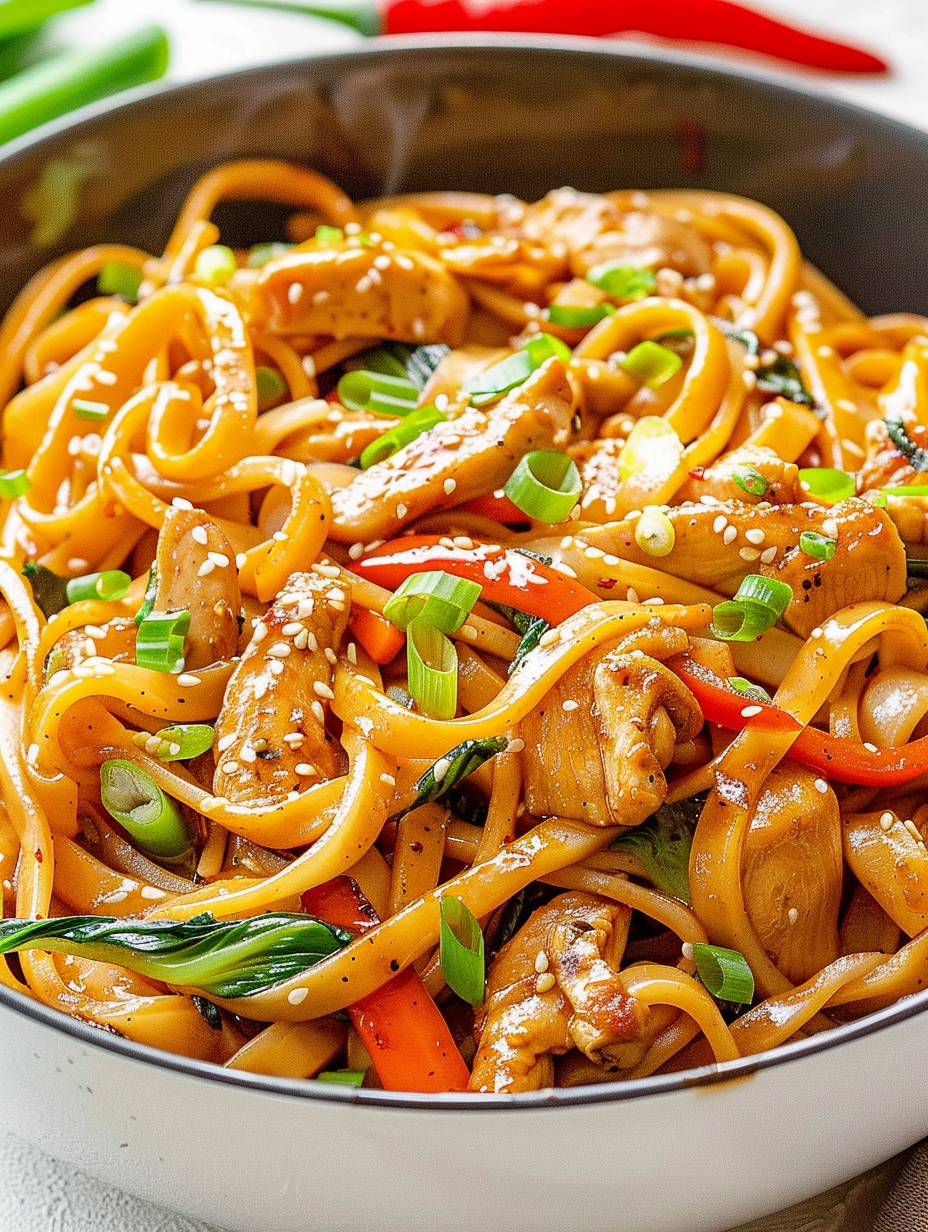
You Must Know
- High heat and quick cooking preserve crispness: use a hot skillet and don’t overcook the vegetables to keep vibrant color and texture.
- Leftovers store well in an airtight container in the refrigerator for up to 5 days; freeze for up to 3 months (preferably without fresh herbs or lime).
- Oyster sauce contains shellfish and soy sauce contains wheat — substitute with tamari and mushroom-based sauce for a gluten-free alternative.
- For lower sodium, choose reduced-sodium soy sauce and taste before adding more — you can always add more at the end.
My favorite aspect of this dish is how forgiving it is. I’ve thrown together versions with frozen mixed vegetables, swapped in rice noodles for a lighter mouthfeel, and even added a splash of toasted sesame oil at the end for a restaurant-like aroma. Family members continually comment on how the sauce tastes complex even though it’s assembled with a handful of common condiments.
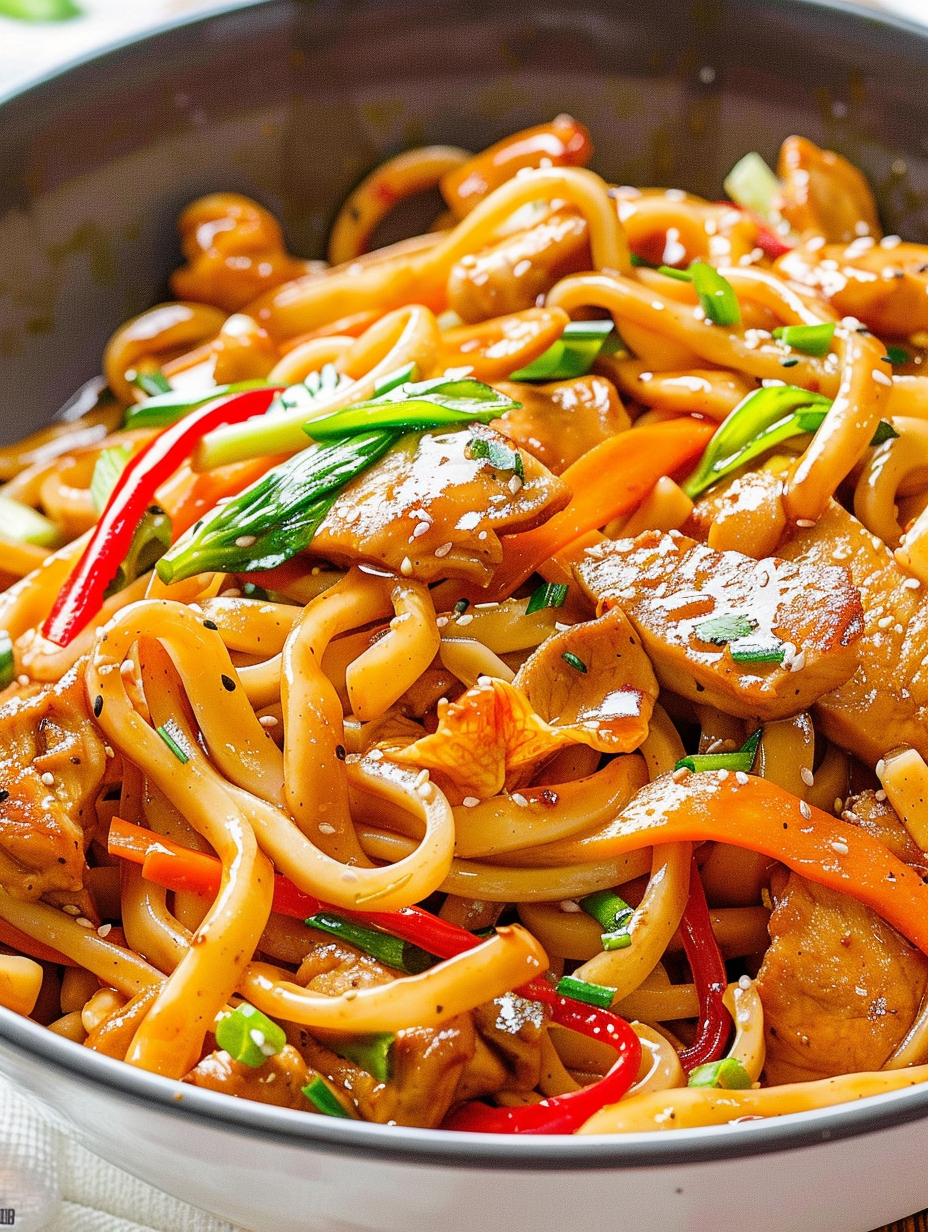
Storage Tips
Store leftovers in an airtight container in the refrigerator for up to 5 days. If you plan to freeze, consider separating the noodles from the sauce and vegetables whenever possible; freeze components individually in labeled containers for up to 3 months. Thaw overnight in the refrigerator and reheat gently in a skillet over medium heat with a splash of water or broth to loosen the sauce. Avoid microwaving frozen portions straightaway to prevent uneven reheating — gentle stovetop warming preserves texture better.
Ingredient Substitutions
If you don’t have udon, use yakisoba, ramen, lo mein, or even spaghetti for a pantry-friendly swap — cook them to al dente so they finish in the pan without becoming mushy. Oyster sauce can be swapped with hoisin for sweeter notes or a mushroom-based stir-fry sauce for a vegan option. Replace toasted sesame oil with a neutral oil in the cooking stage and add a small drizzle of sesame oil at the end for aroma. For gluten-free, use tamari and rice noodles; for lower sodium, pick reduced-sodium soy sauce and increase aromatic ingredients.
Serving Suggestions
Serve this with lime wedges and a scattering of toasted sesame seeds and chopped cilantro. It pairs nicely with a simple cucumber salad or quick pickled vegetables to cut through the richness. For a heartier meal, serve alongside steamed edamame or a bowl of miso soup. Garnishes like thinly sliced chiles or a drizzle of chili oil add a spicy finish without overwhelming the balanced sauce.
Cultural Background
Stir-frying is a hallmark of East Asian home cooking — a technique that relies on quick, high-heat cooking to preserve brightness and texture. Udon noodles come from Japan and are thick wheat noodles that soak up sauces beautifully. The combination of soy and oyster sauces is common across Chinese and Japanese-influenced stir-fries, creating a balance of salt, sweet, and umami. This recipe blends those flavors into a familiar, home-kitchen friendly version that honors the principles of wok cooking even when made in a skillet.
Seasonal Adaptations
Spring: add sugar snap peas and baby corn for freshness. Summer: toss in julienned bell peppers and finish with fresh basil. Autumn: use shiitake mushrooms and kale for earthier notes. Winter: braise thicker-cut carrots longer and add roasted squash for sweetness. Adjust the vegetable mix to seasonal availability — the technique remains the same.
Meal Prep Tips
Prep components in advance: slice the chicken and store in the marinade for up to 24 hours, chop vegetables and keep them in separate airtight containers, and pre-cook noodles if you plan to reheat quickly on busy nights. For batch cooking, double the recipe and freeze half (preferably noodles and sauce separately). When reheating, warm the sauce and chicken gently before adding noodles to avoid overcooking the vegetables.
This dish brings together speed, flavor, and flexibility — an ideal candidate for weeknight rotation. Make it your own with your favorite noodles and vegetable combinations, and enjoy the way simple pantry ingredients transform into something memorable when combined with a little technique and care.
Pro Tips
Pat the chicken dry before marinating to ensure better browning and caramelization.
Toss drained noodles with a little oil after cooking to prevent sticking before stir-frying.
Don’t overcrowd the pan when searing the chicken — work in batches if necessary to maintain high heat and good color.
Add toasted sesame oil at the end to preserve its aroma rather than cooking it at high heat.
This nourishing chicken stir fry with noodles recipe is sure to be a staple in your kitchen. Enjoy every moist, high protein slice — it is perfect for breakfast or as a wholesome snack any time.
FAQs about Recipes
Can I use different noodles?
Yes — you can substitute udon with yakisoba, ramen, lo mein, or even spaghetti. Cook to al dente to prevent over-softening in the pan.
How do I make this gluten-free or vegetarian?
Use tamari and a mushroom-based stir-fry sauce in place of soy and oyster sauces for a gluten-free and vegetarian option.
Tags
Chicken Stir Fry with Noodles
This Chicken Stir Fry with Noodles recipe makes perfectly juicy, tender, and flavorful steak every time! Serve with potatoes and a side salad for an unforgettable dinner in under 30 minutes.

Ingredients
Main Protein
Marinade & Sauce
Noodles
Vegetables
Cooking Oils & Garnish
Instructions
Marinate the chicken
Combine sliced chicken with 2 tbsp soy sauce, 2 tsp rice vinegar, and 1 tsp cornstarch in a large bowl. Toss to coat and let sit for 10 minutes.
Cook the noodles
Boil 1 lb udon according to package directions, drain, and toss with a little oil to prevent sticking. Set aside.
Prepare the sauce
Whisk remaining 2 tbsp soy sauce with 2 tbsp oyster sauce, 1 tbsp toasted sesame oil, garlic, and ginger in a small bowl. Keep nearby.
Sear the chicken
Heat 1–2 tbsp neutral oil in a large skillet over medium-high heat. Add chicken in a single layer and sear for 2–3 minutes until cooked through and golden. Remove to a plate.
Stir-fry the vegetables
In the same skillet, add more oil if needed and sauté onion and carrot for 2–3 minutes. Add bok choy and white parts of scallion and cook until crisp-tender.
Combine and finish
Add cooked noodles and pour the sauce over everything. Toss to coat, return chicken to the skillet, and stir-fry for 1 minute until heated through. Adjust seasoning and garnish to serve.
Last Step: Please leave a rating and comment letting us know how you liked this recipe! This helps our business to thrive and continue providing free, high-quality recipes for you.
Nutrition
Did You Make This?
Leave a comment & rating below or tag
@flavest on social media!

Categories:
You might also like...

3-Ingredient Strawberry Protein Balls
Simple, portable strawberry protein bites made with strawberry puree, coconut flour, and vanilla protein powder. Ready in 10 minutes and perfect for snack time.
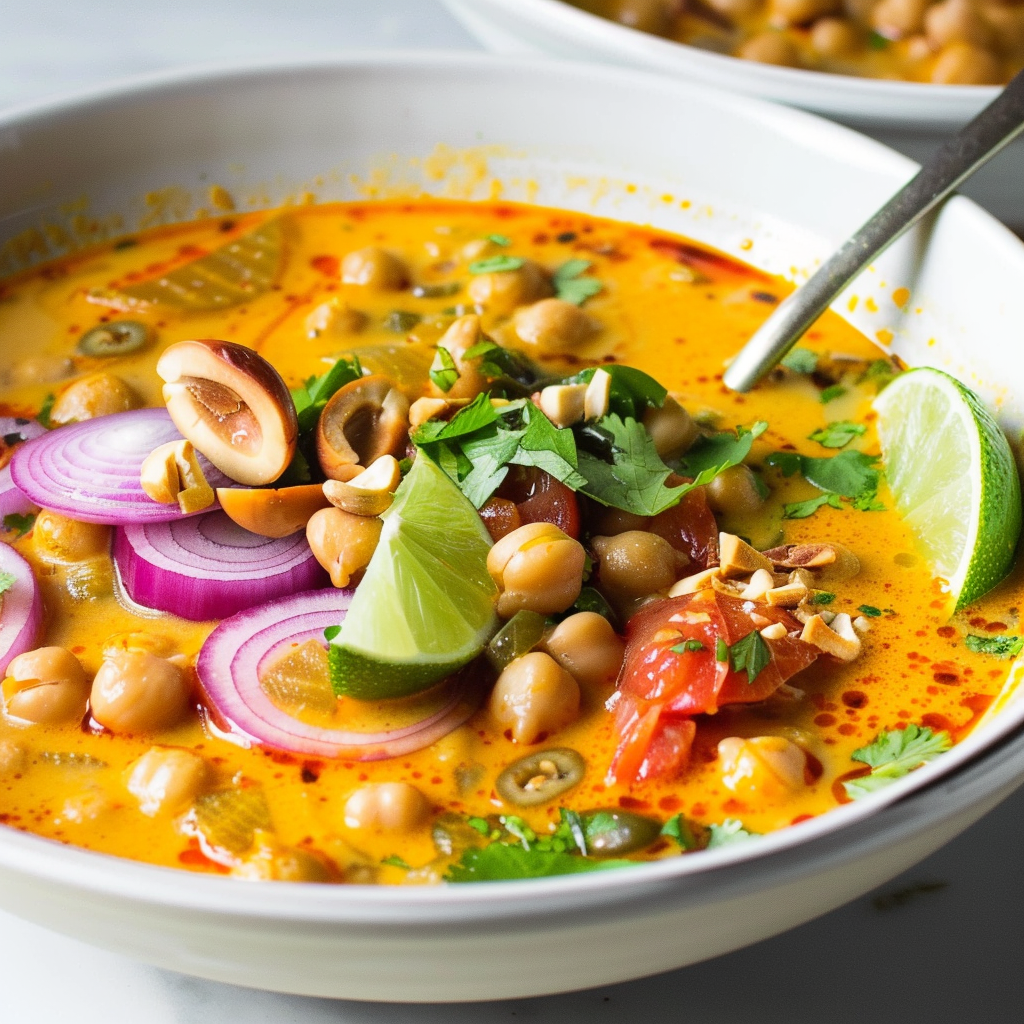
30 Minute Chickpea and Tomato Coconut Curry Soup
A cozy, pantry friendly chickpea and tomato coconut curry soup ready in 30 minutes. Vegan, gluten free, and full of warming curry flavor.
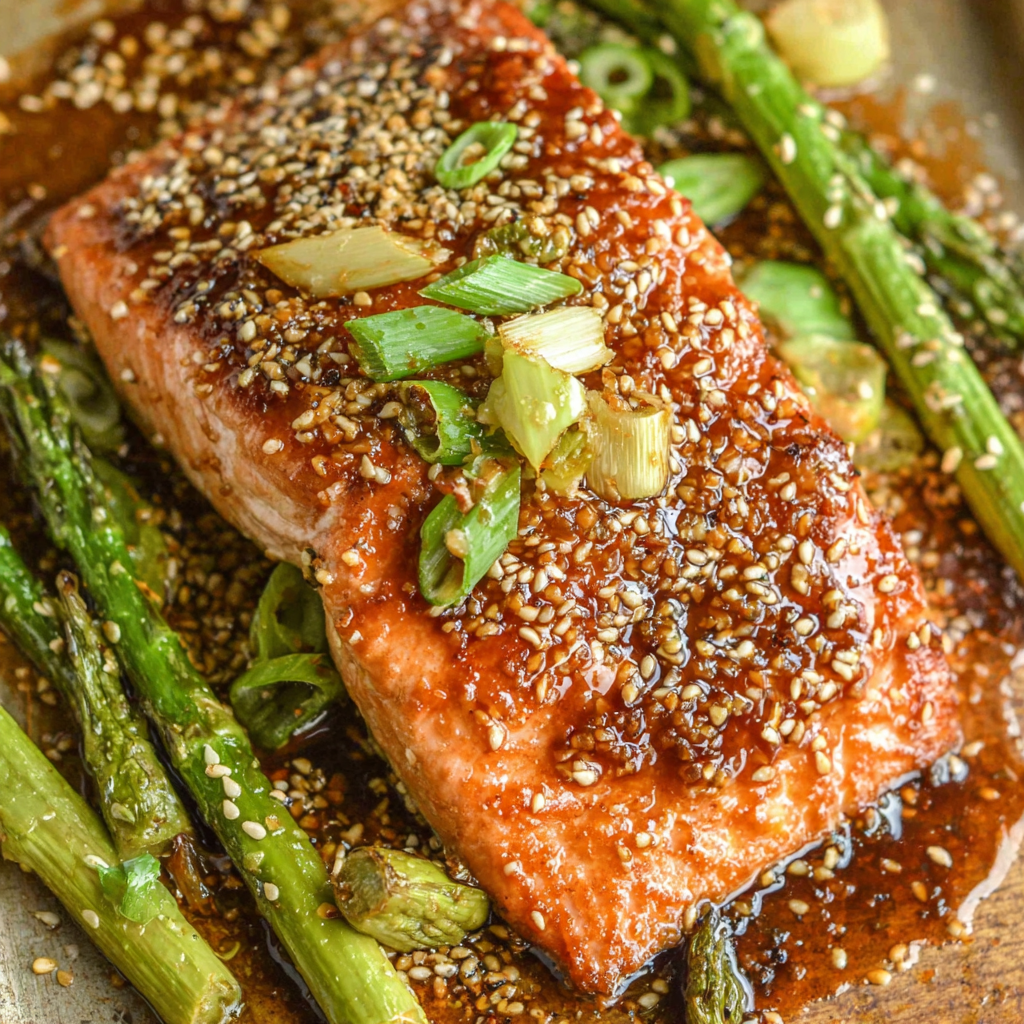
30-Minute Garlic Ginger Glazed Salmon (Gluten Free!)
A quick, pantry-friendly salmon finished with a sticky garlic ginger glaze. Gluten free, soy free option, and ready in 30 minutes for a weeknight favorite.

Did You Make This?
Leave a comment & rating below or tag @flavest on social media!
Rate This Recipe
Share This Recipe
Enjoyed this recipe? Share it with friends and family, and don't forget to leave a review!
Comments (1)
This recipe looks amazing! Can't wait to try it.
Comments are stored locally in your browser. Server comments are displayed alongside your local comments.
Hi, I'm Maria!
What's Popular
30-Minute Meals!
Join to receive our email series which contains a round-up of some of our quick and easy family favorite recipes.

